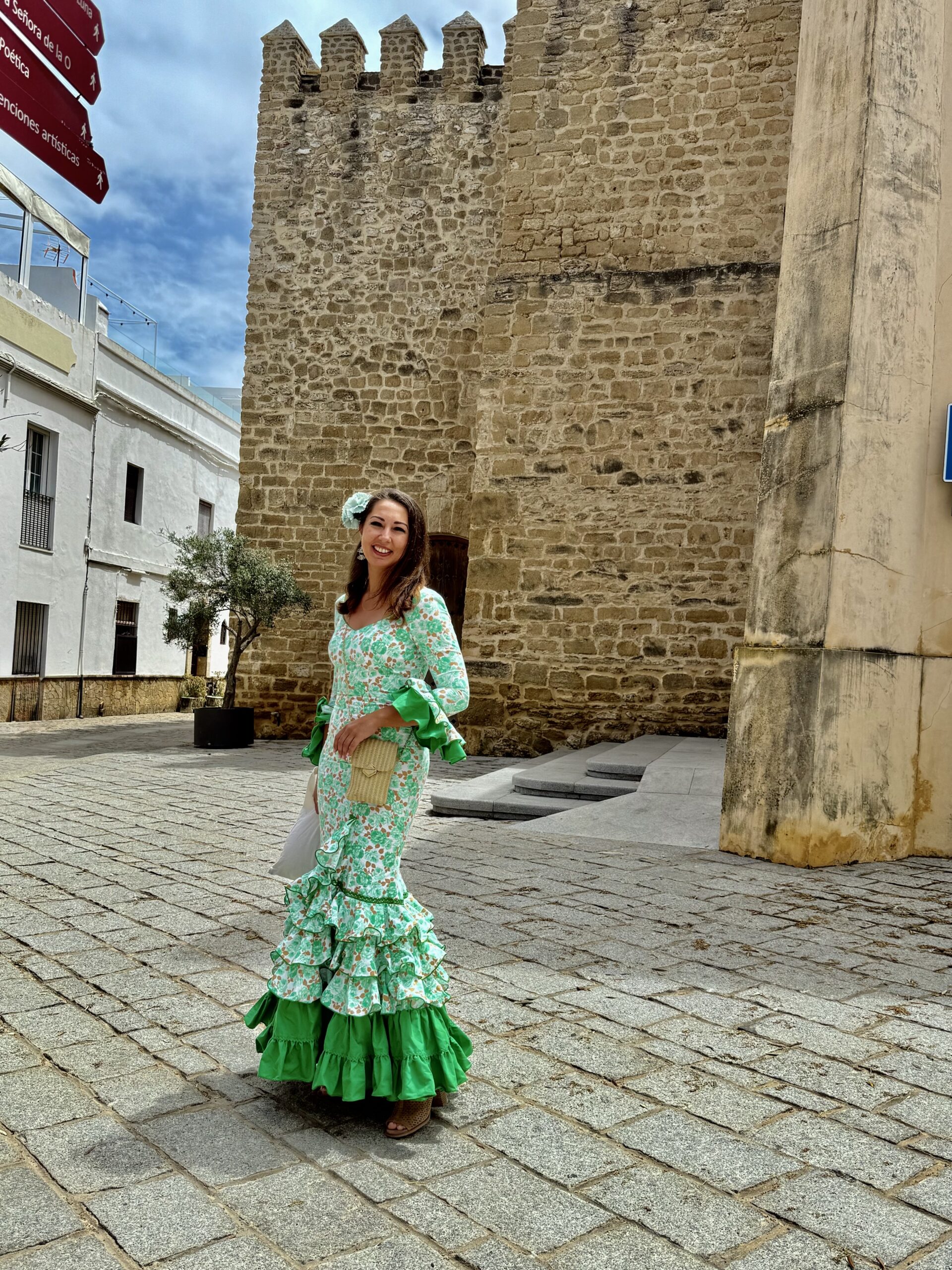
Throw me (up) something, mister
May 9, 2025
Growing up in New Orleans there was a street celebration unique to our city. You all know it as Mardi Gras. We knew it as Mardi Gras too, but it meant something different for us locals.
Here in Rota Feria ran for four days on a city fairgrounds that took days to assemble and maybe one to take it all down again. The celebrations began in early afternoon and continued nightly until all sane people would have gone to bed. (Carol and I soon learned from the comfort of our bed that there are no sane people in Rota.)
Back in the day, it wasn’t about trading cheap necklaces for a glimpse of female body parts. Truth is, you wouldn’t trade anything in your bag of loot, accumulated from chasing the same parade several times, for anything as seeing female body parts unappealingly on display by the outrageous costumes worn by some of our fellow (and considerably drunker parents uncles, aunts, grandparents, teachers, civic leaders as well as local law enforcement).
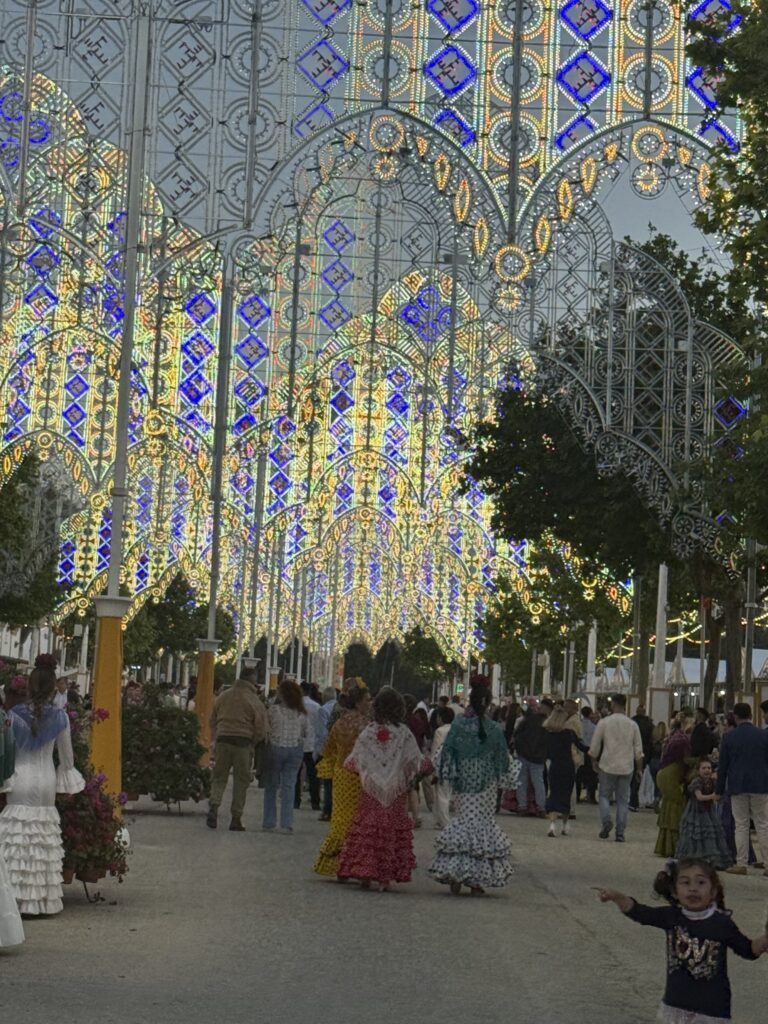
Contrast this with another rite of Spring celebration here in Spain known as Feria de Primavera.
Here in Rota Feria ran for four days on a city fairgrounds that took days to assemble and maybe one to take it all down again. The celebrations began in early afternoon and continued nightly until all sane people would have gone to bed. (Carol and I soon learned from the comfort of our bed that there are no sane people in Rota.)
There seems to be three main components of Feria. First is the formal and classically elaborate dress primarily worn by females aged 0 to 80. Men wore formal suits but were clearly underdressed by comparison.
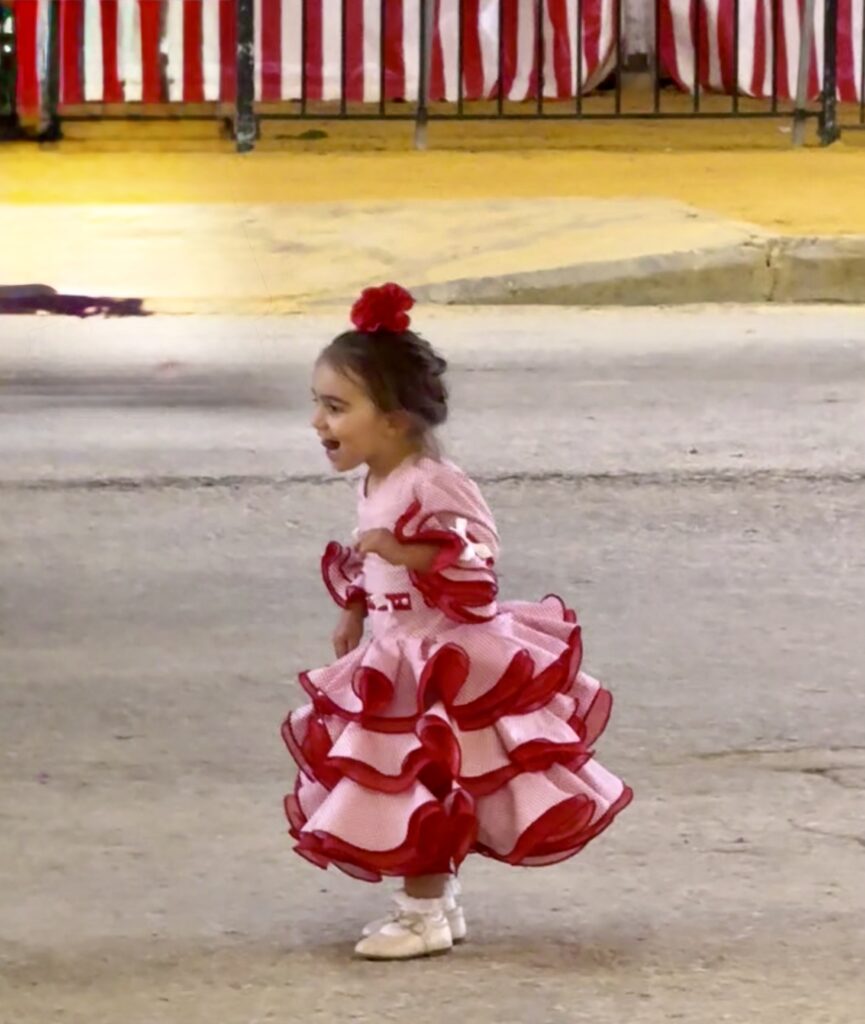
The main activity is flamenco dancing, practiced especially by anyone present whether they had a clue of the classical steps. (Someone explained to me that the women take an apple from a tree, eat it and then discard it on the ground. The men imitated bullfighters.) I watched them dancing all night long, and by the end of the night, I couldn’t have told you the difference between the bullfighters and the apple pickers.
This is because the beverage of choice throughout the four days of Feria is a drink charitably referred to as a sherry, but in point of fact is a fermentation composed apparently of vegetable peelings, WD-40 and bleach. At least that’s what it tasted like to Carol and I who tasted it once and went immediately looking for the kitchen and bathroom section of the local supermarket for something comparable to drink for the evenings we were there.
By the fourth night, the fairgrounds should have looked like Bourbon Street on the first night of Carnival. But the elegantly dressed women were fresh and crisp in their resplendent gowns, the men all primmed, proper and deferent and the children well-behaved and happy to run off with any parent that appeared amenable to instant adoption.
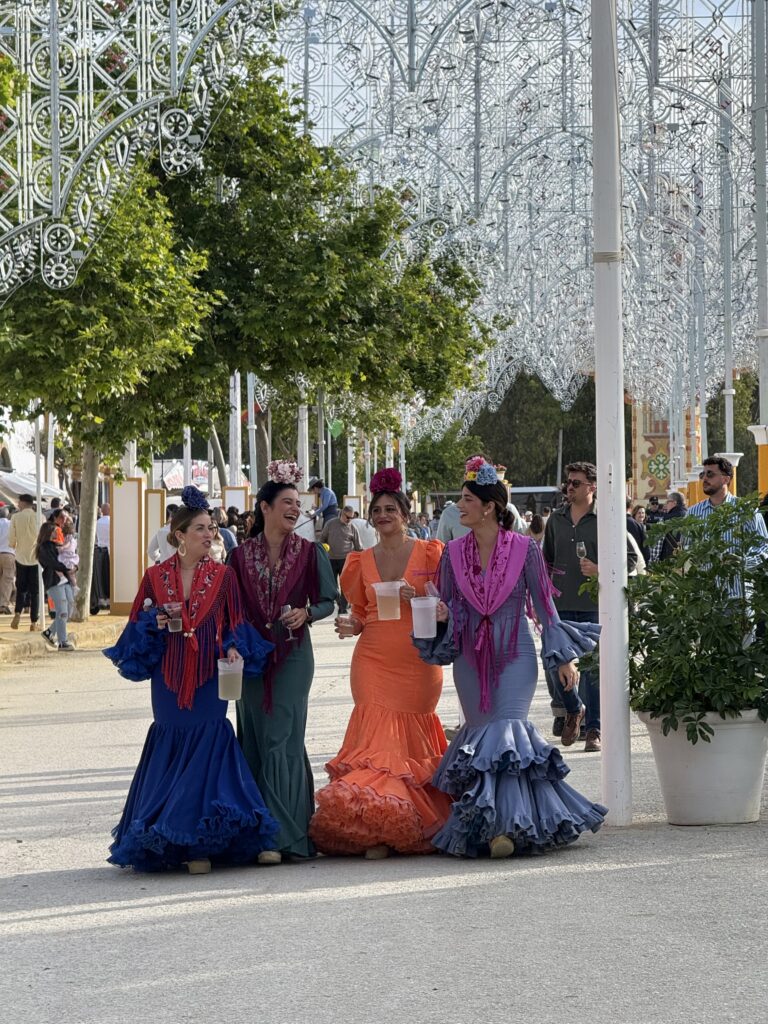
At least that’s the way all this seemed to me. No public drunkenness, fights, boob flashing, or frantic searching for lost children. (They’d all be returned to rightful parents in the morning, no doubt.)
Maybe it’s the lack of ruthless competition for worthless trinkets thrown from floats and considered to be Kings’ ransoms. But I honestly believe it’s that sherry. I feel certain every Feria reveller says the same thing by the end of it:
“I’m never doing this again, and this time I mean it!”
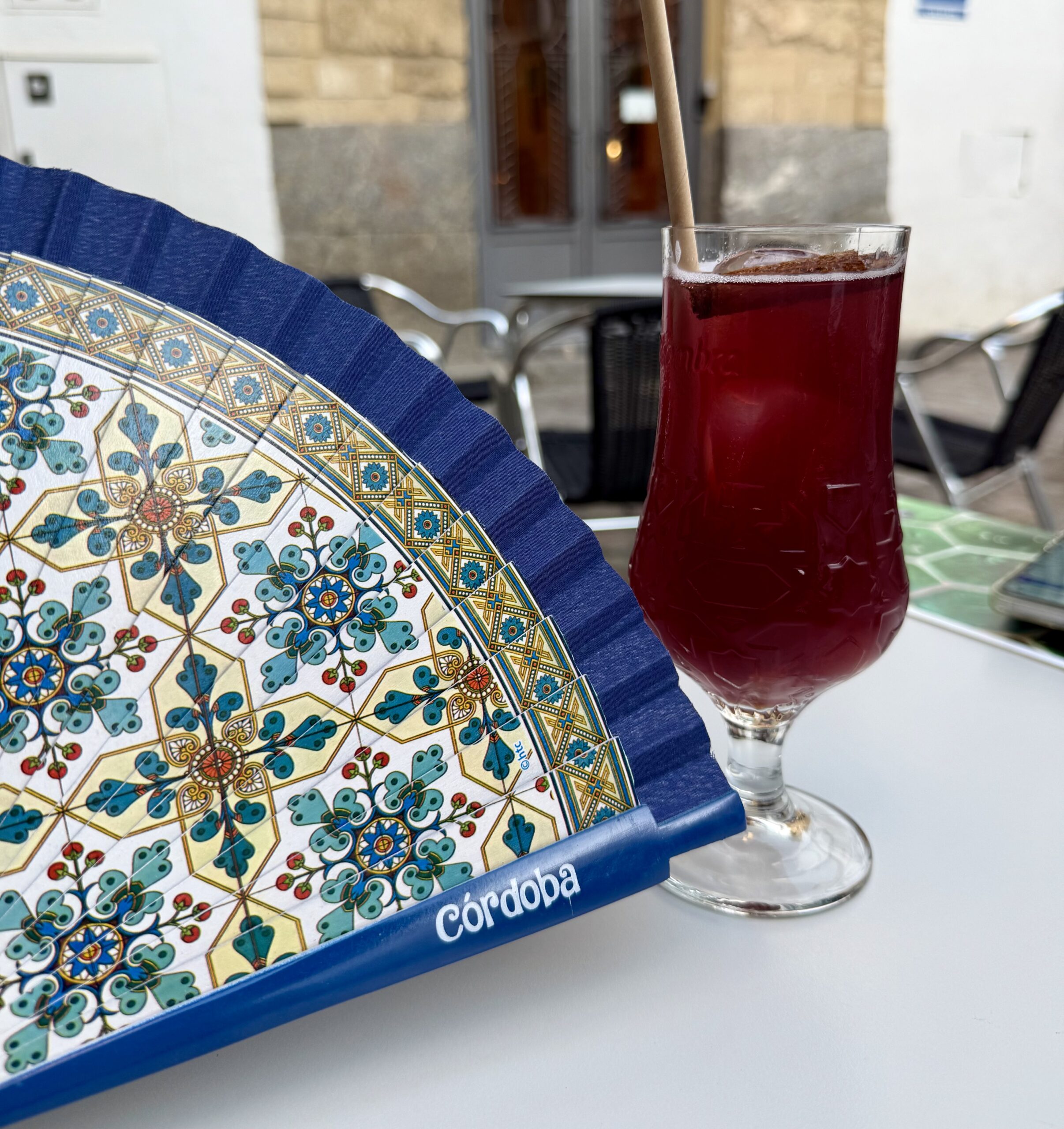
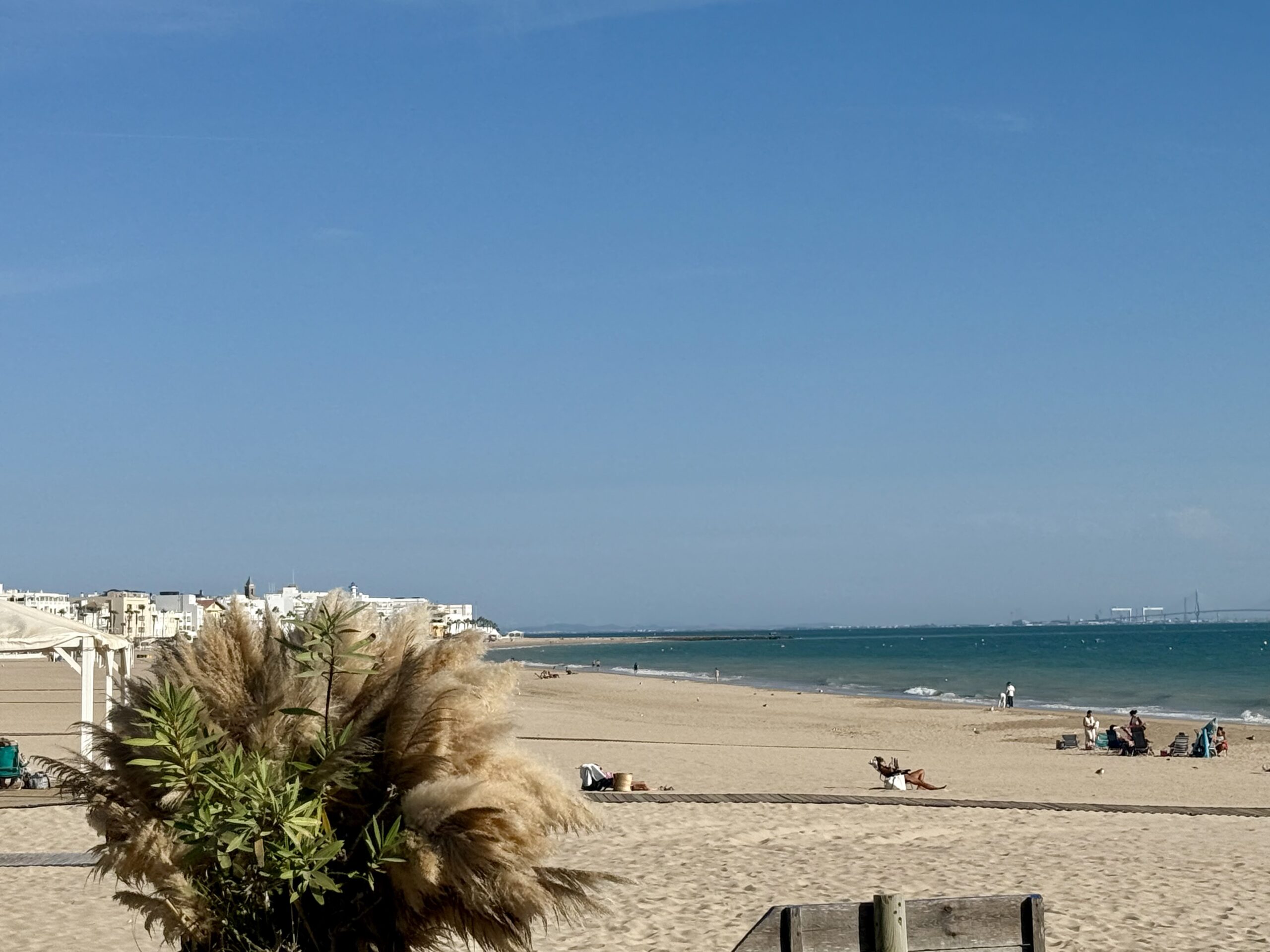

Be the first to comment